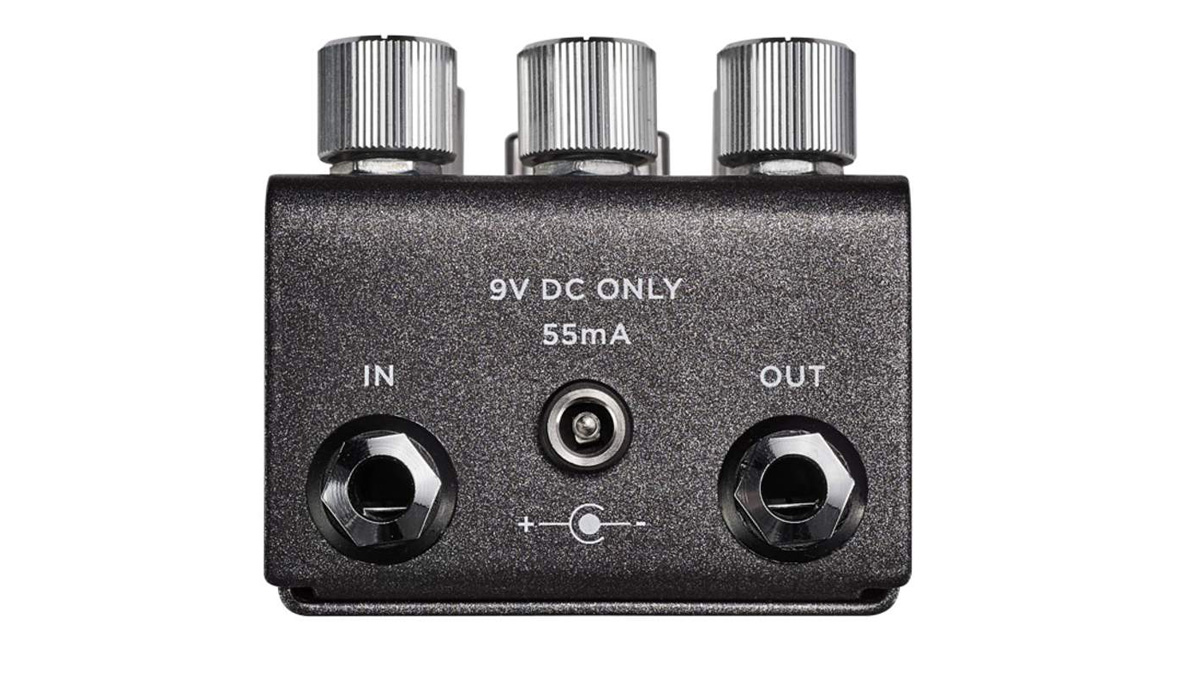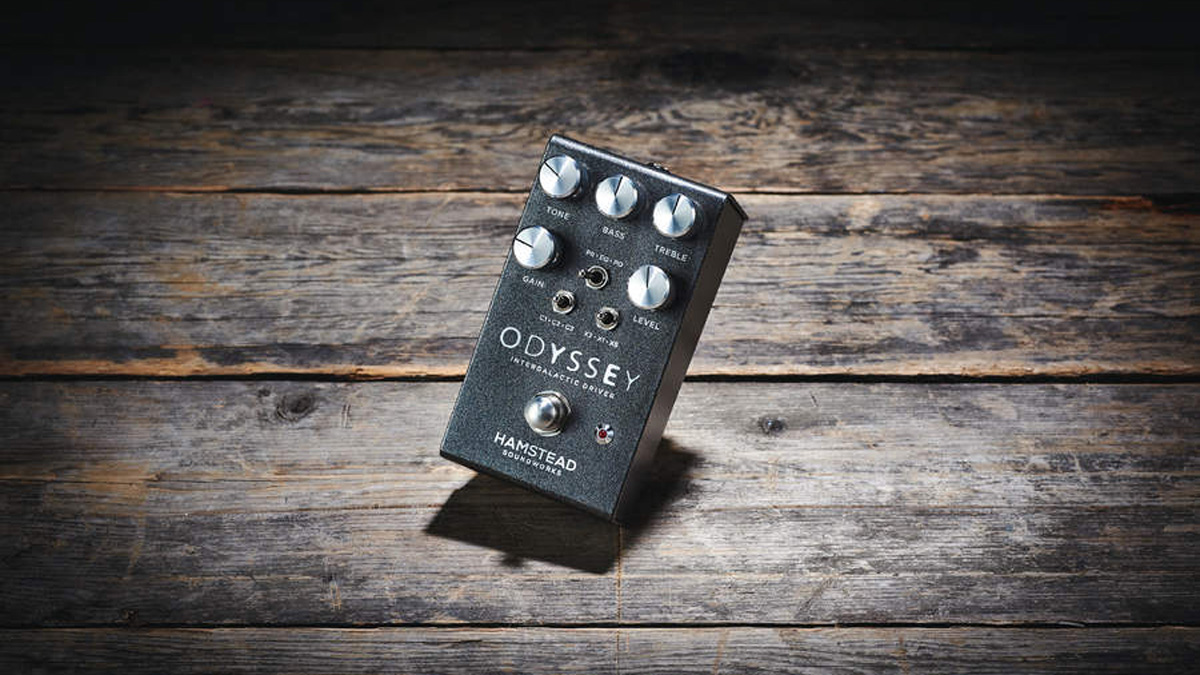MusicRadar Verdict
If you want a supremely flexible, pedalboard-friendly drive pedal, this is it.
Pros
- +
Compact.
- +
Variety of dirt tones over a wide range of gain.
- +
Powerful EQ.
- +
Level knob with up to 32dB of gain.
Cons
- -
None once you get the measure of how the Tone, Bass and Treble knobs interact.
MusicRadar's got your back
The dirt pedal that can be many things to many players is a goal that several manufacturers have taken a tilt at recently: in the last year alone we’ve seen Strymon’s Riverside and Sunset, Elektron’s Analog Drive, the BIAS Distortion Pro and Chase Bliss Brothers. Now it’s the turn of some home-grown talent.
Hamstead Soundworks is the Cambridge-based amp maker that’s only previous foray into pedals was its well-received Tremolo/Boost. It has now followed that with the Odyssey - described as an “Intergalactic Driver” - which features three selectable clipping options or a simple clean boost with EQ.
The tidily put-together Odyssey is a very practical pedalboard proposition, taking up almost exactly the same amount of space as a Boss compact pedal and having a nifty optical OptoKick footswitch designed by TheGigRig for silent switching.
Sounds
With five knobs and three, three-way toggle switches there are quite an array of options available. The first is a clean boost that can utilise the two EQ knobs. Bass and Treble both have indented centre flat EQ positions and from there you can each dial in 18dB of cut or boost.
A three-position toggle switch can determine whether the EQ comes before or after the clipping stage of the pedal but its centre position is for clean boost mode where the clipping circuitry is inactive. Here, you can use the Odyssey purely for an EQ shift with the Level knob in its upper reaches setting the output level.
With flat EQ and the pedal’s input gain as normal the Level knob doesn’t offer any discernible boost but it will provide plenty of it if you use another toggle switch to set the pedal’s overall input gain level, either doubling it (X2) or boosting it by five times (X5). These are the way to go if you want lots of clean boost to drive amps, especially if you give them an extra tickle with a carefully chosen EQ tweak.
Moving the EQ to either Pre or Post puts the pedal in drive mode with the three clipping options. C1 offers symmetrical clipping, C2 offers asymmetrical clipping affecting only half the signal while C3 uses two clipping circuits. A Gain knob turns up the drive over a huge range while a Tone knob determines the level of high frequencies in the drive circuit and is very potent in matching the drive sound naturally to your core tone or adding a crisp sheen to it.

Bringing in the Treble and Bass knobs in the Pre setting to feed into the clipping circuitry increases your options and is particularly effective in shaping the dirt’s midrange in the absence of a dedicated Mid knob. Turning both up yields scooped mids, while a degree of bass and treble cut can give a TS-style mid hump. You can in fact closely match the Tubescreamer sound with clipping set to C1 but that’s just one aspect of what the Odyssey is capable of, as the aptly-named pedal can take you on an epic journey through the world of dirt pedals.
While the three clipping modes offer different starting points for building a tone and the versatile EQ can flavour it, the combination of the Gain knob and the input boost switch means that there is an awful lot of drive gain available if you want it.
You can, in fact, dial in everything from very light transparent breakup through the medium gain sounds of driven amps to full-on high gain metal distortion. We particularly liked the C2 symmetrical clipping setting for crisply-defined low gain drive as a complement to our natural amp sound but that same C2 mode with all the Gains maxed was also capable of encroaching on fuzz pedal territory demonstrating a chameleon-like nature to the Odyssey that should see it adapt to an ever-changing range of player’s drive needs.
While some drive pedals in a similar price range are single-sound pedals, the Odyssey has a versatility that’s truly remarkable. An original design, it doesn’t seem to be based on any particular drive pedal but can certainly deliver similar, if not identical, results to a good many different models. If you want a supremely flexible, pedalboard-friendly drive pedal, this is it: your favourite drive sound is probably here... it’s just a matter of finding it.
Trevor Curwen has played guitar for several decades – he's also mimed it on the UK's Top of the Pops. Much of his working life, though, has been spent behind the mixing desk, during which time he has built up a solid collection of the guitars, amps and pedals needed to cover just about any studio session. He writes pedal reviews for Guitarist and has contributed to Total Guitar, MusicRadar and Future Music among others.
“I used everything I knew about music”: How Green Day exceeded expectations with their most ambitious song
YouTube just added AI tools that makes musicians, library music and video editors redundant
“Every one of them said yes without hesitation": Hank Marvin and Roger Taylor have just remade a '60s classic for charity











